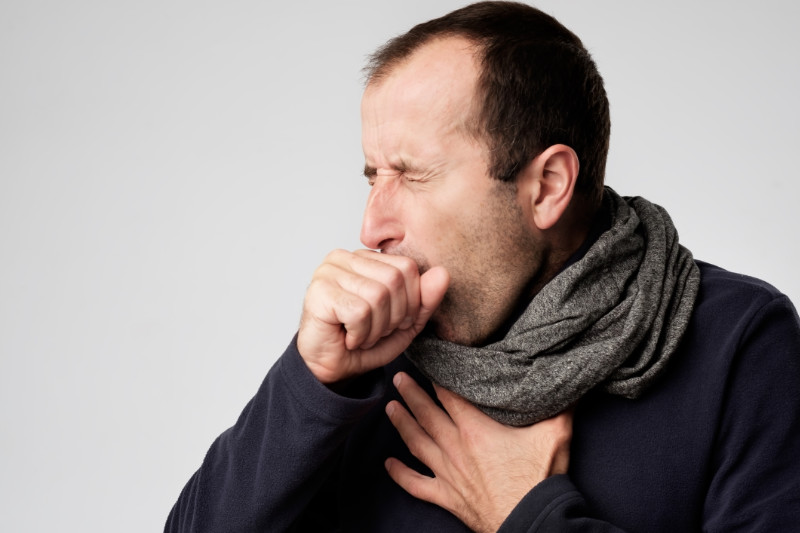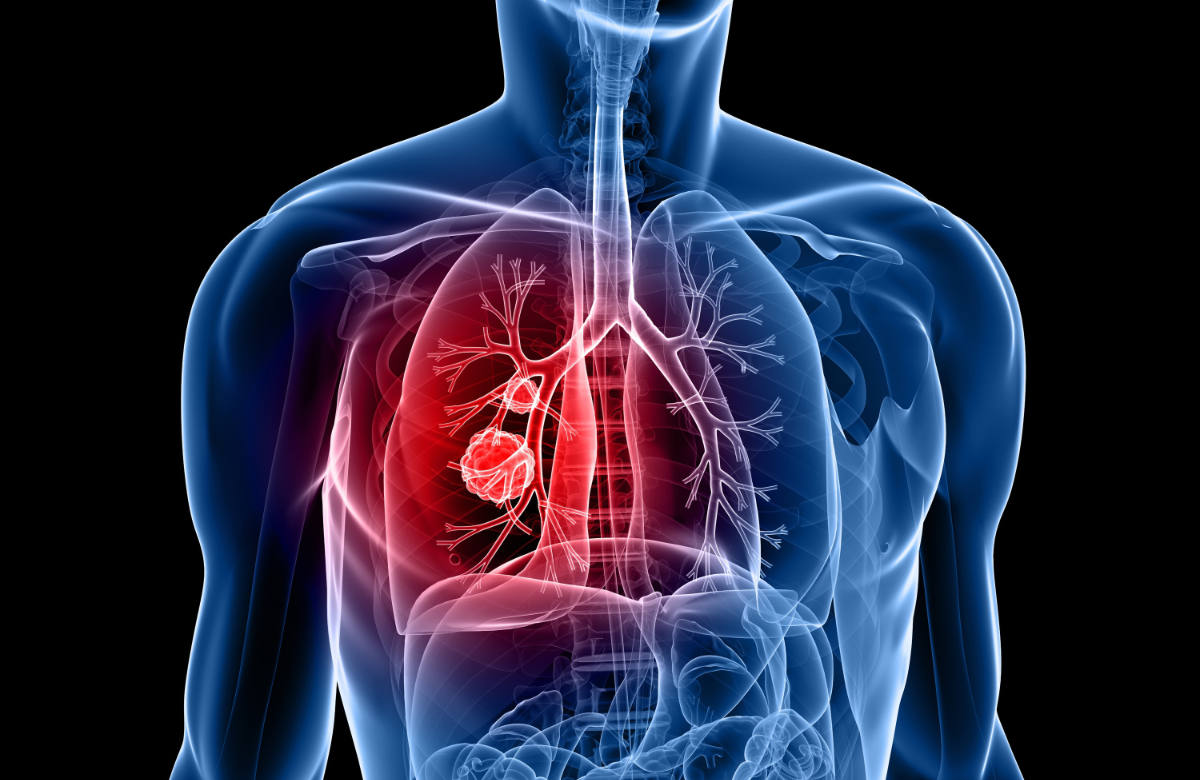Having a persistent cough and shortness of breath are increasingly common first signs of lung cancer, according to a new study. But did you know that your face, voice and even fingers could show signs of the disease too?
The Cancer Research UK-funded study by researchers at the University of Exeter also found a decrease in patients who reported their first symptom to be coughing up blood, or loss of appetite, which are generally regarded as the headline symptoms of lung cancer.
Lung cancer is the most common cancer in men and the third most common in women worldwide.

Sam Janes, a professor of respiratory medicine at University College London and medical adviser to the British Lung Foundation, says: “Lung Cancer sadly often presents late when it has spread around the body, usually making cure impossible. By far the commonest symptoms are cough or a change in cough, feeling short of breath, weight loss and blood in the sputum. However this can also occur in other lung diseases, making diagnosis difficult.
“Clubbing (changes in fingernail shape) and swelling of the neck and face are pretty rare symptoms, and importantly there can also be other less worrying conditions that cause these signs.”
12 essential things to know about lung cancer
Here are some things you may not know about the disease.
1. There are no early symptoms
There are usually no signs or symptoms in the early stages of lung cancer, the NHS say. Symptoms of the disease develop as the condition progresses.
2. A persistent cough is a common symptom

A cough is the most common and misleading symptom of lung disease, as it’s such a general condition that can be often be chalked up to cold or flu. Most of the time, if a cough is accompanied by running nose and sore throat, there’s nothing to worry about – it’s probably a seasonal infection which will disappear in a few days.
However, if the cough has been persistent for more than three weeks and is accompanied by blood or rust-coloured mucus, it might be a sign of lung cancer.
3. Feeling out of breath may be a sign of lung cancer
Breathlessness after working out at the gym or after climbing up few flights of stairs is normal and shortness of breath is also connected to other causes, such as a common cold, chest infections, panic attacks and smoking. But if you experience regular shortness of breath, especially when there is no obvious reason (like when you’re sitting down and relaxed), then it might be a symptom of lung cancer.
4. It can cause chest pain
Most chest pain, especially if mild and short-lived, shouldn’t be a sign of anything serious. However, in some cases, persistent chest pain may be a sign that your lungs are not working correctly and so might be connected to lung cancer.
5. It can leave you feeling tired, with a loss of appetite and weight loss
Unexplained weight loss of 10lbs or more may be the first sign of cancer. Moreover, people with lung cancer may find difficulty in chewing and swallowing as well as nausea or lack of appetite.
Cancer cells use a huge amount of the body’s energy supply, so another common symptom that accompanies weight loss is excessive tiredness and fatigue.
6. It can cause finger clubbing
Cancer Research UK (CRUK) says finger clubbing – when the tips of the fingers change shape – affects 35% of people with non small cell lung cancer.
Firstly, the nail bed becomes soft and you might notice the skin next to it becoming shiny. Next, the nail will curve more than normal – also known as Scarmouth’s sign – before the ends of the fingers get rounder and larger.
View this post on InstagramGrade 5 finger clubbing in a patient with tetralogy of fallot. #fingerclubbing #instadoc101
The CRUK website explains that it’s thought it be fluid collecting because more blood is flowing to the ends of the figures than usual. No one knows fully why this happens but it could be down to the tumour producing particular chemicals or hormones. If you have finger clubbing speak to your doctor who should send you for a chest X-ray.
7. There can be extra bone growth
In the later stages of finger clubbing, extra areas of bone might form on the finger joints, wrists and ankles. There may also be pain and swelling in the joints. This is sometimes mistaken for arthritis, says CRUK, and is called hypertrophic pulmonary osteoarthropathy (HPOA).
8. A hoarse voice might be a sign
The British Lung Foundation says a hoarse voice can be a sign of lung cancer. This symptom may be caused by tumours pressing on the laryngeal nerve in the chest. If this nerve is squashed, one of the vocal cords in the throat can become paralysed, leading to hoarseness.
9. Facial swelling can happen
Swelling of the face or neck may be caused by the blockage of a main blood vessel (superior vena cava obstruction). CRUK says this can be due to the lung tumour pressing on it.
10. Shoulder pain can be a symptom of a rare type

Severe shoulder pain, or pain that travels down the arm, is the most common symptom of a rare type of lung cancer that grows at the very top of the lung called a pancoast tumour.
These types of lung tumours, says CRUK, can also cause a collection of symptoms called Horner’s syndrome which include drooping or weakness of one eyelid and a small pupil in the same eye, and loss of sweating on one side of the face. These symptoms are caused by the tumour pressing on or damaging a nerve that runs from the neck to the side of the face.
11. There are some symptoms that can throw you off
CRUK says some types of lung cancer cells produce hormones that go into the bloodstream and can cause symptoms that don’t seem related to the lung cancer. Such symptoms are called paraneoplastic syndrome and can include pins and needles or numbness in the fingers or toes, and muscle weakness. There may also be drowsiness, weakness, dizziness and confusion, breast swelling in men, and blood clots.
12. You don’t have to be a smoker

Although the majority of people who get lung cancer are smokers or have smoked in the past, research from the Royal Society of Medicine has found one in six people dying of lung cancer are non-smokers.
If you are a smoker and looking to give up, read our 17 tips to stop smoking – addiction experts on hypnosis and beating cravings.































































